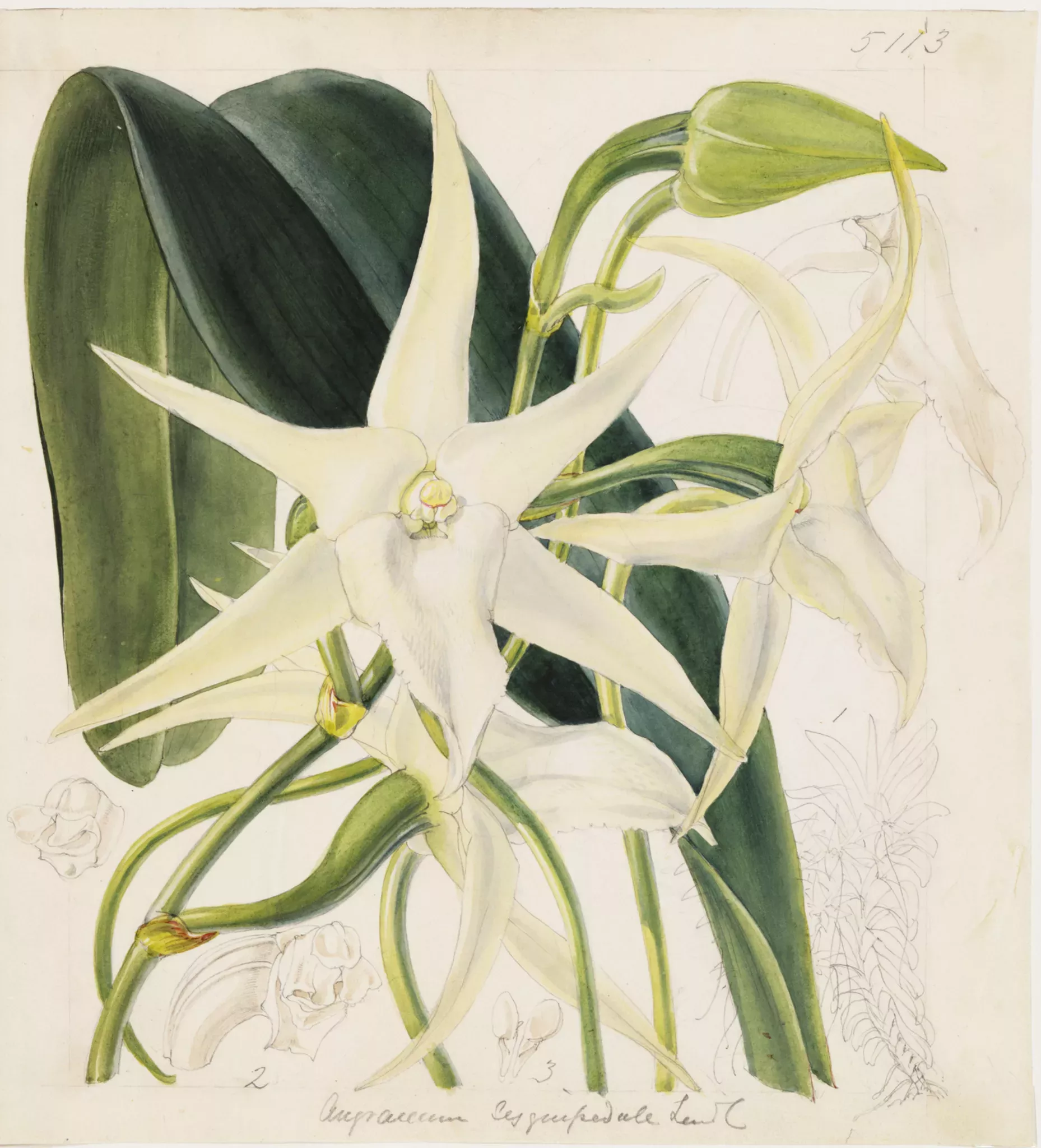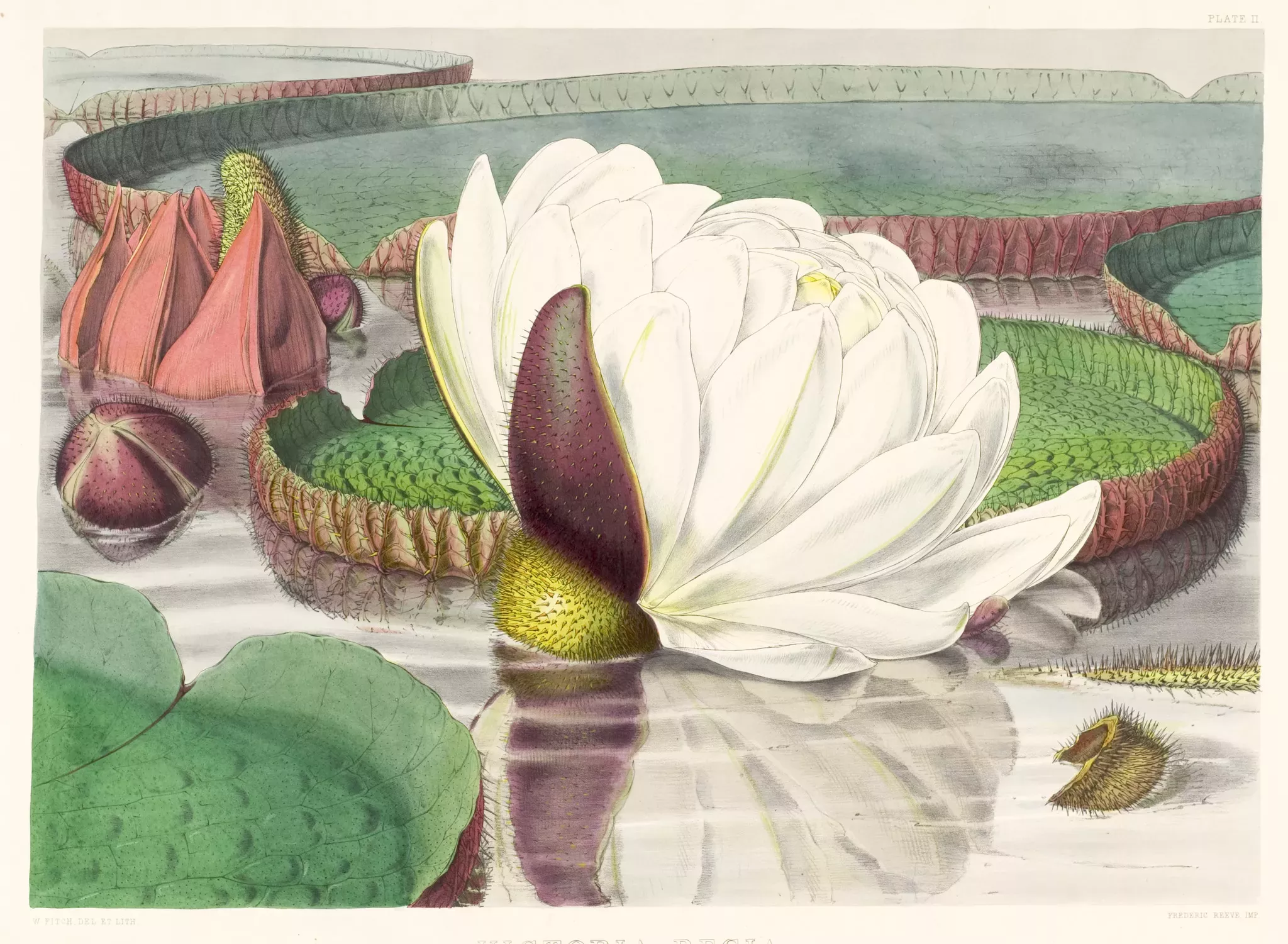2 June 2017
Tales from the world of pollination
Francesca Mackenzie looks into the bizarre and fascinating world of pollination.

Darwin’s long-tongued moth
In 1862 James Bateman, a British orchid grower, sent Charles Darwin a series of orchids from Madagascar. Included amongst these was Angraecum sesquipedale, a beautiful white star-shaped orchid with a nectary around 30cm long. Darwin hypothesised that such a flower could only be pollinated by a creature with a similarly long tongue, that had developed alongside the flower. He wrote to Sir Joseph Hooker, the Director of Kew Gardens at the time, in surprise ‘do you know its marvellous nectary eleven and a half inches long with nectar only at the extremity - what a proboscis the moth that sucks it must have!’ This letter can be viewed as part of the Darwin correspondence project based in Cambridge. He later wrote of this prediction in On the various contrivances by which British and foreign orchids are fertilized by insects, and on the good effects of intercrossing - one of the books we hold in the library at Kew.
Darwin’s species prediction was indeed accurate, and in 1907 Xanthopan morganii praedicta (the Malagasy subspecies of the African hawkmoth) was discovered. This is a huge moth with a wingspan of 16cm and proboscis that could exceed 20cm. When not in use the proboscis forms a coil in front of the head. However, it was not until 1992 that the moth was discovered feeding upon the flower - around 130 years after Darwin’s prediction. This hawkmoth is now often depicted next to Angraecum sesquipedale in botanical illustrations.

The queen of waterlilies
The waterlily Victoria amazonica, originally named Victoria regina, was named in Queen Victoria’s honour after its discovery in the Amazon. This plant has thermogenic flowers, meaning that the flowers produce heat. On the first day of flowering the flowers are white and produce a scent which is said to be similar to pineapple or butterscotch. This is attractive to ectothermic insects. which fly into the flower. The heat the plant produces is used by the insects as a source of energy. The beetles will stay in the flower overnight transferring pollen onto the stigma as the flower closes around them. During this time the flower changes from female to male, and the colour from white to pink. The beetles leave the next day through a small opening in the flower, where more pollen attaches itself to their bodies. Now pollinated, the flower sinks into the water and the beetles move on to the next flower.
Due to the complicated pollination process, the flower is hand-pollinated at Kew and can be found on display at Kew in the summer months. The waterlily was first propagated successfully in 1849 but it was not until 1850 that a specimen from Kew first flowered. The leaves are incredibly wide and strong and it is said they can support up to 45kg in weight.



